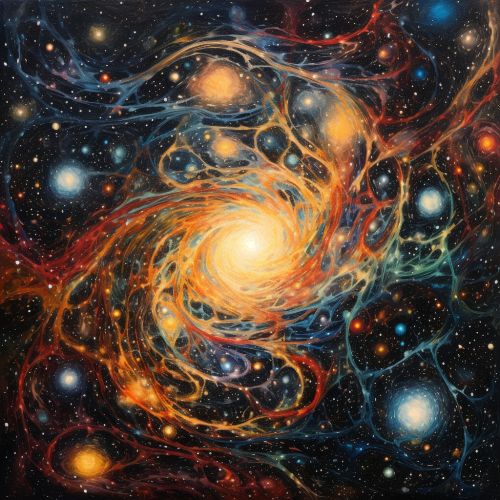Cosmological constant
Introduction
The Cosmological constant is a term in the field of cosmology that represents the energy density of empty space or vacuum. It was first introduced by Einstein in his field equations of general relativity as a means to obtain a stationary universe, which was the accepted view at the time. However, after the discovery of the universe's expansion, Einstein reportedly referred to the cosmological constant as his "biggest blunder". In the modern context, the cosmological constant is associated with the concept of dark energy, which is hypothesized to permeate all of space and cause the acceleration of the universe's expansion.


Historical Context
The cosmological constant was first proposed by Einstein in 1917 as a modification to his original theory of general relativity. At the time, it was believed that the universe was static and unchanging, a view that was consistent with the prevailing scientific consensus. However, Einstein's original field equations suggested a dynamic universe that was either expanding or contracting. To reconcile this discrepancy, Einstein introduced the cosmological constant as a term that could counterbalance the attractive force of gravity and create a static universe.
Mathematical Representation
In the context of general relativity, the cosmological constant is represented by the Greek letter Lambda (Λ). It appears in Einstein's field equations in the following form:
Rμν - ½gμνR + gμνΛ = 8πGTμν
Here, Rμν is the Ricci curvature tensor, gμν is the metric tensor, R is the scalar curvature, Λ is the cosmological constant, G is the gravitational constant, and Tμν is the stress-energy tensor. The cosmological constant term gμνΛ represents the energy density of the vacuum.
Cosmological Constant and Dark Energy
In the late 20th century, observations of distant supernovae suggested that the expansion of the universe is accelerating, a phenomenon that could not be explained by the known laws of physics. This led to the hypothesis of dark energy, a form of energy that permeates all of space and exerts a negative pressure, leading to the acceleration of the universe's expansion.
The cosmological constant is one of the simplest and most popular models for dark energy. In this model, the cosmological constant is interpreted as the energy density of the vacuum, which remains constant in space and time. This constant vacuum energy results in a negative pressure that drives the accelerated expansion of the universe.
Problems and Controversies
Despite its success in explaining the observed acceleration of the universe, the cosmological constant model of dark energy is not without its problems. One of the most significant issues is the so-called "cosmological constant problem", which refers to the discrepancy between the observed value of the cosmological constant and the value predicted by quantum field theory. The observed value is approximately 120 orders of magnitude smaller than the predicted value, a discrepancy that has been described as the worst theoretical prediction in the history of physics.
Another issue is the "coincidence problem", which asks why the density of dark energy is comparable to the density of matter in the universe today, despite their vastly different evolution over cosmic time. This apparent coincidence is difficult to explain within the framework of the cosmological constant model.
Conclusion
The cosmological constant remains a central concept in modern cosmology, despite the problems and controversies associated with it. Its introduction by Einstein marked a significant development in the field of general relativity, and its modern interpretation as dark energy has profound implications for our understanding of the universe. While the exact nature and properties of the cosmological constant are still subjects of ongoing research, its existence and importance are well-established in the field of cosmology.
